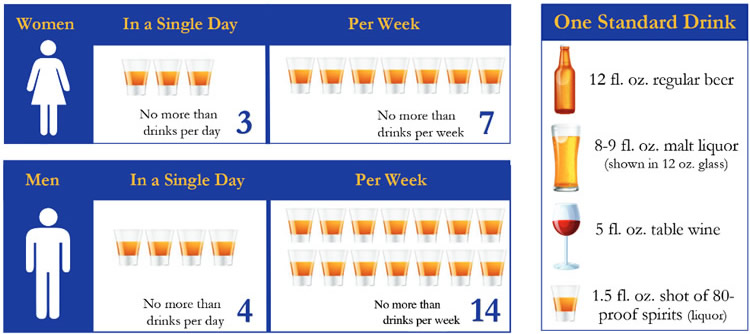Improve Your Health
For most adult men and women, Using alcohol at low-risk levels decreases the likelihood of experiencing alcohol related health concerns. Following both daily and weekly limits will support low-risk use. These limits are based on standard drinks.
Low-risk use of alcohol does not eliminate all risk. Your risks can increase when
-
Drinking quickly
-
Drinking on an empty stomach
-
Combining alcohol with other medications or drugs.
-
Driving after drinking (high risk)
For some groups of people, low-risk drinking limits are different:
-
Pregnant Women
There is no safe level of alcohol use during pregnancy. Women who drink during pregnancy are at high risk for having a baby born with Fetal Alcohol Spectrum Disorder.
-
Individuals ages 65+
Aging can decrease an individual’s tolerance to alcohol. Adults over the age of 65 have the same low-risk drinking limits as females in the general population: No more than 3 drinks daily and no more than 7 drinks per week.
-
Individuals taking medications
Mixing medication and alcohol can be extremely dangerous. Many prescription and over-the-counter medications can react with alcohol, which may intensify the effects of the medication (drowsiness, dizziness, etc.) or even internal bleeding and organ damage. Check with your healthcare professional or pharmacist to determine what level of alcohol consumption is safe while on medication.
-
Adolescents
There is no safe level of alcohol use during adolescence. Adolescents who drink are more likely to experience legal social, and school problems. The risk for developing alcoholism is higher for people that start drinking as adolescents.
